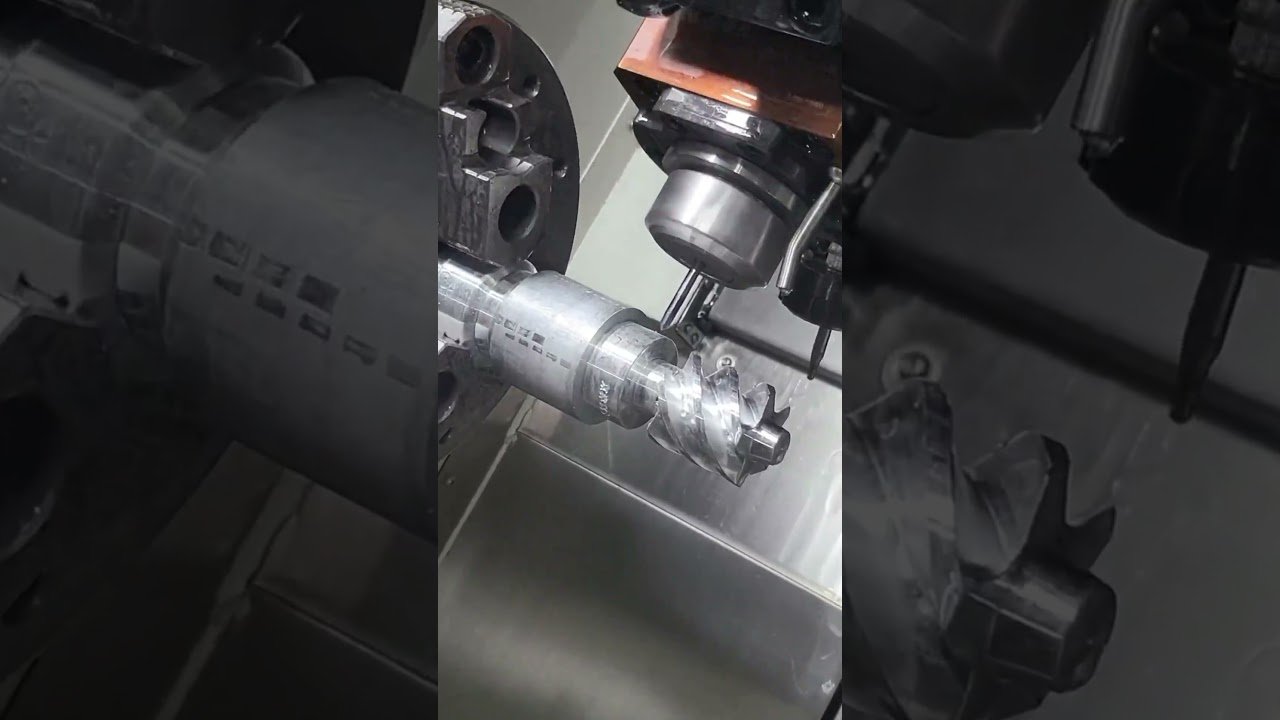Understanding CNC Mill-Turn Machining: A Comprehensive Overview
The landscape of modern manufacturing is ever-evolving, shaped by technological advancements and the quest for efficiency. Among the cutting-edge techniques being adopted by manufacturers, CNC mill-turn machining stands out as a highly versatile and effective method. This innovative process combines both milling and turning operations in a single setup, allowing for complex geometries to be machined more efficiently than ever before.
What is CNC Mill-Turn Machining?
CNC mill-turn machining refers to a computer-controlled manufacturing process that integrates both milling and turning operations into one cohesive setup. Utilizing CNC (Computer Numerical Control) technology, this method automates the machining process, enhancing precision and repeatability. The primary machinery involved is a CNC mill-turn center, which is capable of performing multiple tasks, thereby reducing the need for multiple machines and setups.
Key Components of CNC Mill-Turn Machines
-
Spindle: The spindle is crucial as it provides the rotational force necessary for machining. In CNC mill-turn machines, there are usually multiple spindles, allowing both the milling and turning functions to occur simultaneously.
-
Tool Holder: The tool holder securely retains various cutting tools, which can be switched out depending on the required machining operation.
-
Workpiece Clamping System: This system holds the workpiece firmly in place during the machining process, ensuring stability and accuracy.
-
CNC Controller: The controller interprets the programmed instructions and translates them into actions for the machine, allowing for precise control over the machining process.
- Coolant System: To manage heat and extend tool life, a cooling system expels coolant to the cutting area, helping maintain optimal operating temperatures.
Benefits of CNC Mill-Turn Machining
CNC mill-turn machining offers a plethora of benefits that make it an attractive option for manufacturers across various sectors.
Enhanced Efficiency
One of the most notable advantages of this combined machining approach is the reduction in production time. By integrating both machining processes, manufacturers can complete complex parts in a single setup, significantly decreasing the time spent on setup and tool changes. This not only streamlines operations but also lowers labor costs.
Increased Precision
CNC technology is synonymous with precision. When compared to traditional machining methods, CNC mill-turn machining can produce components with tighter tolerances, ensuring that parts fit together perfectly in assemblies. The automated nature of CNC also eliminates the potential for human error, leading to improved consistency across repeated productions.
Cost-Effectiveness
Although the initial investment in CNC mill-turn machines may be higher than standard lathes or mills, the long-term savings can be substantial. Fewer machines and setups reduce space and maintenance costs, while enhanced efficiency translates to higher output. Additionally, the reduced labor costs and the ability to create more complex parts often lead to greater profit margins.
Versatility
CNC mill-turn machining is highly versatile, capable of handling a wide range of materials—from metals and plastics to composites—making it suitable for different industries, including aerospace, automotive, and medical device manufacturing. It can also accommodate a diverse array of part sizes and complexities, expanding the scope of what can be produced.
Applications of CNC Mill-Turn Machining
The applications of CNC mill-turn machining are vast, thanks to its flexibility and efficiency. Below are some of the key sectors where this technology is making a significant impact:
Aerospace Industry
The aerospace sector demands precision-engineered components that can withstand high pressures, temperatures, and stresses. CNC mill-turn machining is instrumental in manufacturing complex parts such as turbine blades, brackets, and housings, ensuring they meet stringent safety and performance standards.
Automotive Manufacturing
With the automotive industry increasingly leaning towards lightweight materials and complex geometries for efficiency and performance, CNC mill-turn machining provides the necessary capabilities to produce high-quality components such as engine blocks, transmission cases, and valve bodies.
Medical Device Production
In the medical field, accurate and reliable components are critical. CNC mill-turn machines can produce medical devices such as surgical instruments, implants, and components for diagnostic equipment with precision and replicability, ensuring adherence to regulatory standards.
How to Choose the Right CNC Mill-Turn Machine
Selecting the appropriate CNC mill-turn machine involves several considerations to match specific manufacturing needs.
Assess Your Production Volume
The expected production volume is paramount in determining the type of CNC mill-turn machine required. For high volume, consider a machine with more advanced specifications and features to accommodate mass production efficiently.
Evaluate Material Compatibility
Ensure that the CNC mill-turn machine you choose is compatible with the materials you plan to use. Different materials have varying machining requirements regarding spindle speed, feed rate, and tooling.
Consider the Complexity of Parts
If your manufacturing process involves complex geometries and tight tolerances, opt for a machine equipped with advanced features such as live tooling and multi-axis capabilities. This will enable you to produce sophisticated parts without the need for secondary operations.
Review Software and Control Capabilities
The software and CNC controls present in the mill-turn machine can have a significant impact on its usability and output quality. A user-friendly interface and advanced programming capabilities allow for greater flexibility and control over machining processes.
Conclusion
CNC mill-turn machining is redefining the standards in modern manufacturing, bridging the gap between precision engineering and operational efficiency. This advanced machining technique enhances production capabilities while delivering high-quality, intricate components that are essential across various industries. As the technology continues to evolve, businesses that embrace CNC mill-turn machining are likely to experience improved competitiveness and adaptability in an ever-changing market landscape.
By investing in this innovative technology, manufacturers can not only streamline their operations but also elevate their product quality and service offerings, setting themselves apart in an increasingly demanding industrial environment. Whether you are in aerospace, automotive, or medical manufacturing, CNC mill-turn machining is a pathway toward achieving excellence in precision machining.
In summary, as #glcncmachining gains traction, it becomes essential for machinists and manufacturers to understand its benefits, applications, and operational characteristics to stay ahead in this competitive field.
Daguang focuses on providing solutions such as precision CNC machining services (3-axis, 4-axis, 5-axis machining), CNC milling, 3D printing and rapid prototyping services.










































